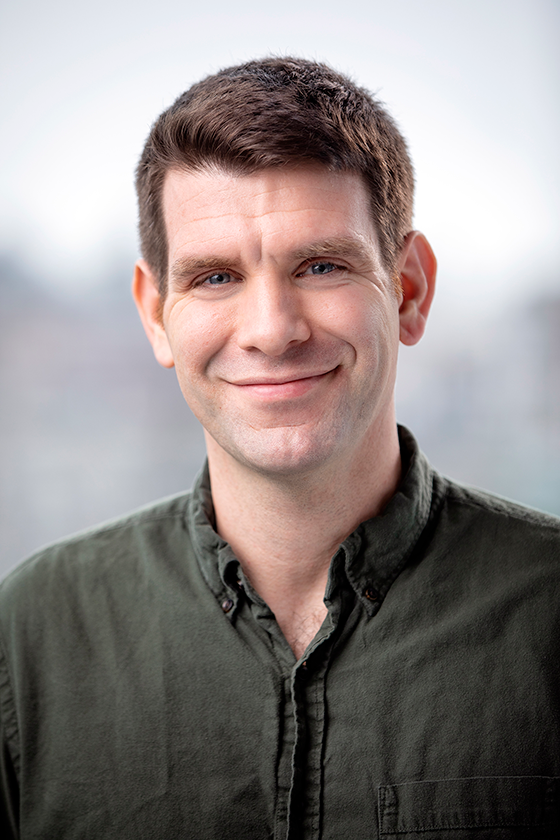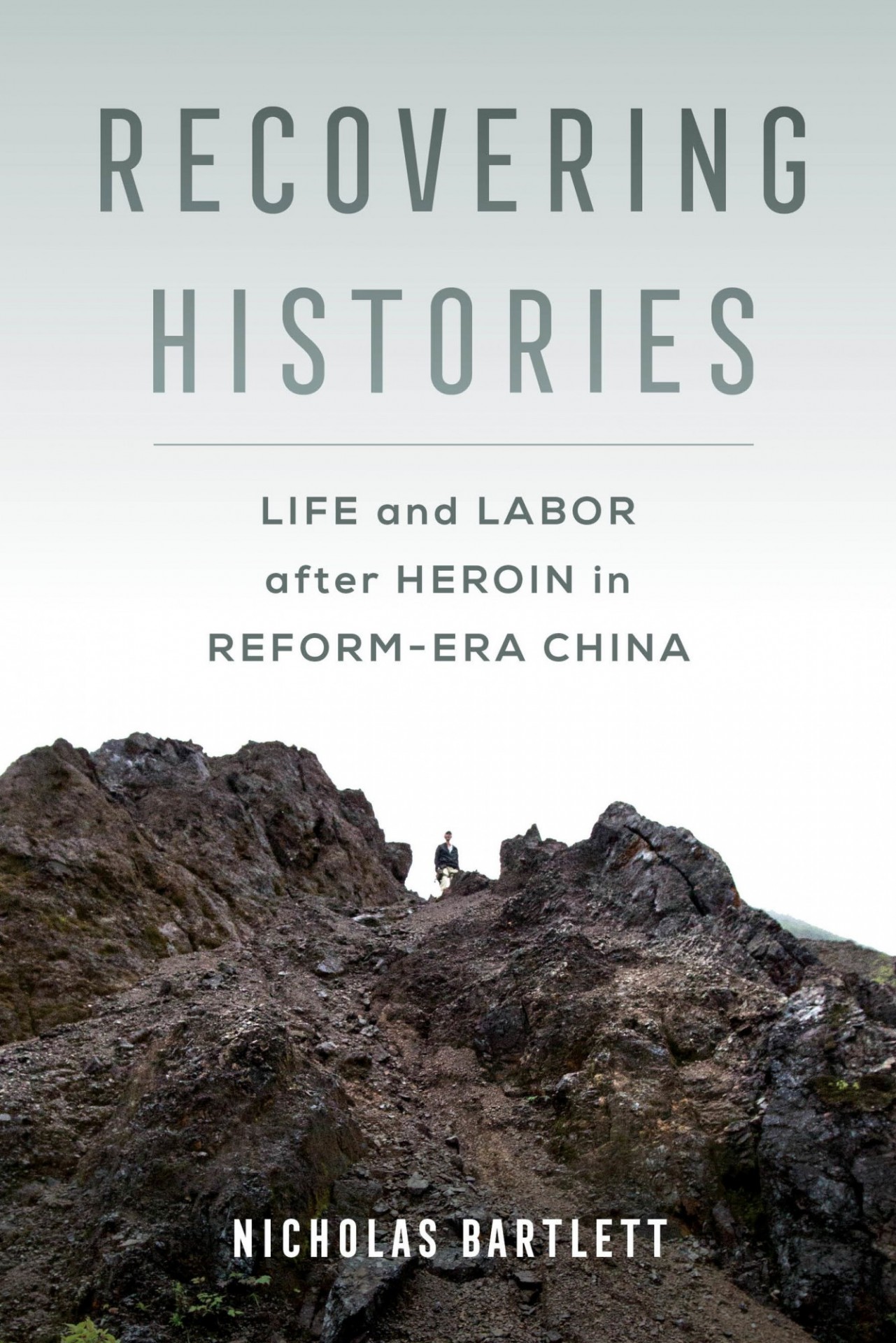WEAI Author Q&A: Nicholas Bartlett's 'Recovering Histories'

We are excited to announce a new title in the Studies of the Weatherhead East Asian Institute book series: Recovering Histories: Life and Labor after Heroin in Reform-Era China published by University of California Press. The book’s author, Nicholas Bartlett, is Assistant Professor of Contemporary Chinese Culture and Society at Barnard College, Columbia University.
About Recovering Histories:
Heroin first reached Gejiu, a Chinese city in southern Yunnan known as Tin Capital, in the 1980s. Widespread use of the drug, which for a short period became “easier to buy than vegetables,” coincided with radical changes in the local economy caused by the marketization of the mining industry. More than two decades later, both the heroin epidemic and the mining boom are often discussed as recent history. Middle-aged long-term heroin users, however, complain that they feel stuck in an earlier moment of the country’s rapid reforms, navigating a world that no longer resembles either the tightly knit Maoist work units of their childhood or the disorienting but opportunity-filled chaos of their early careers. Overcoming addiction in Gejiu has become inseparable from broader attempts to reimagine laboring lives in a rapidly shifting social world. Drawing on more than eighteen months of fieldwork, Nicholas Bartlett explores how individuals’ varying experiences of recovery highlight shared challenges of inhabiting China’s contested present.
We thank Professor Bartlett for taking the time to discuss his new book with us.
Q: First can you introduce yourself and how your research background brought you specifically to look into the case of recovering heroin users in China?
After college, I moved to Beijing for a year as a Freeman fellow to study table tennis. The first jobs I held in China were working on HIV prevention projects and studies focusing on the practices of injecting drug users. Starting in 2006, I began to collaborate more closely with individuals with heroin use history. My decision to pursue a PhD in medical anthropology grew in part out of wanting to have the time to develop relationships and explore questions about addiction that weren’t determined by the priorities of public health work. Over time, my research came to focus on individual and collective experiences of recovery.
Q: Can you speak about Gejiu, the city where this book takes place?
I first heard about Gejiu from public health colleagues in 2002—the city at the time had been identified as a hot spot for HIV transmission. By 2005, Gejiu was appearing in international media reports as an example of China’s dynamic multi-sectoral response to the harms of drug use and infectious disease. While working at a foundation supporting harm reduction programs, I made my first trip to southern Yunnan province to visit grantees in 2008. Yan Jun (a pseudonym), a grassroots activist and key figure in the book, led me on a whirlwind tour of the region. I left excited about local forms of care provided by and for people with heroin use history.
The city center—referred to locally as “Tin Capital”—is surrounded by mountains, which have attracted miners for hundreds of years. In the 1950s, the Communist Party oversaw the nationalization of many smaller private firms. Yunnan Tin, a massive state-owned enterprise (SOE), for decades oversaw resource extraction in the region while offering workers and their families stable employment and generous benefits. In the late 1980s and 1990s, private mining bosses emboldened by new liberalization policies flooded the nearby mountains in search of wealth. That mining boom was short lived. Just before my arrival, the government announced that Gejiu had been designated a “resource depleted” city. While I was there, local residents—including recovering drug users—were adjusting to life after the restructuring of local SOEs and preparing for an increasingly post-industrial future.
Q: Can you introduce the terminology of addiction and how social conceptions of heroin addiction differ in China from the West? How do heroin users who have “quit drugs” and those who have “returned to society” fit into the historical time of the nation?
My book is interested in the temporality of recovery—and more specifically how individual attempts to create lives after heroin intersect with collective ways of narrating and experiencing social time. A quick look at competing Chinese terms for recovery helps to introduce this problem. The popular term “quitting drugs” (jiedu), often deployed by workers in hospital and compulsory detoxification centers, emphasizes an understanding of recovery centered on keeping the patient’s body free of illicit substances. The primary goal—preventing relapse—can be measured by the time of the clock.
I focus more on a second term, “return to society” (huigui shehui), a phrase applied to the work of rehabilitation undertaken by Falungong members, corrupt officials and homeless young people, in addition to drug users. By foregrounding the importance of the wayward subject finding his or her place in a dynamic collective, this term draws attention to the inherently social aspects of breaking from long-term heroin use. It also evokes a more complex and contested temporal politics of recovery.
Most of my interlocutors agreed using heroin had been a disastrous mistake. But what of their other early career decisions? What ways of moving, thinking, reflecting and acting accumulated from the past should they preserve? In turning to the future, what type of career and social status could they expect? Who were appropriate potential role models? And how were they to know if they were moving in the right direction? Discussions about the ambiguities of “returning to society” highlighted the fact that overcoming addiction in Gejiu required this group reinvent themselves as historical actors.
Q: Why do you call this group the Heroin Generation?
The region’s heroin users were generally born in the late 1960s and 1970s and often encountered the drug in the second half of the 1980s and early 1990s while laboring in the region’s emerging private sector. Common experiences in their youth had lasting influences on this group. For example, individuals often recounted having intense arguments with their parents when they decided to pursue lucrative but morally charged and dangerous jobs in private sector mining and related industries. Heroin use for many initially fit their self-conceptions as bold, transgressive, thrill-seeking post-Maoist workers.
In the early 2010s as heroin was fading from public view, my interlocutors expressed feelings of obsolescence linked to anxieties that they were “stuck” in the country’s recent past. Ideas about how to pursue a “return” drew on shared notions of the past that informed this group’s sense of the demands of the present. Rather than assuming they were bound together by their shared relationship to drugs, my account explores the particular ways that this cohort of workers belonged to a shared community of time. Calling this group the Heroin Generation is meant to draw attention to the importance of their shared trajectory through China’s reform and opening.
Q: What role does labor play in recovery for this group?
Members of the Heroin Generation participated in numerous laboring regimes over the course of their lives. While some held early career positions in state “iron rice bowl” positions like their parents, virtually every person with heroin use history I knew moved through multiple jobs in the rapidly changing private sector. They also spent years—in one case, over a decade—performing menial, repetitive compulsory labor in re-education through labor centers. These institutions under Mao had focused on housing political dissidents. Starting in the 1990s, they turned to “treating” hundreds of thousands of individuals who were often repeatedly detained for illicit drug use. As a result of cycling through these institutions, my interlocutors had internalized different rhythms of laboring and been exposed to diverging ideas about how their working lives might help them to overcome addiction.
Many of those who “idled” involuntarily during my time in Gejiu were critical of contemporary Chinese state policies. They spoke fondly of the goals and methods of SOE-coordinated drug treatment programs briefly operating in the late 1980s. Some evoked the radical revolutionary power of collective “remolding through labor” they imagined to have existed in the first years of the People’s Republic, a time when members of their grandparents’ generation had started new careers after long periods of opium use. This appreciation for the healing potential of socialist traditions of labor coexisted uneasily with this group’s recent overwhelming negative personal experiences in compulsory labor centers.
I also observed the strategies that recovering middle-aged men and women deployed to restart their careers. Individuals joined international multilevel marketing organizations, worked as security guards, formed their own grassroots NGOs, tried to reprise roles as “bosses” in licit and illicit business, and voluntarily committed themselves to state-run pilot “community treatment” programs where they worked in locked facilities. These efforts elucidated shared challenges that marginalized workers faced in Hu’s China.
Q: What are the broader implications that can be drawn from your study?
In attempting to make sense of China’s ongoing reforms, many writers have drawn attention to the contrast between urban beneficiaries of rapidly rising living standards and migrant and rural workers who are said to be perpetually lagging behind the country’s rush to the future. The recovering heroin users I came to know—almost all Han, urban residence permit holders—don’t fit into these categories. Their vexed relationship to the country’s historical trajectory frequently became indistinguishable from their illness experiences as long-time drug users. In attempting to move towards a life after addiction, this group offers crucial insights into how injury from the recent past comes to be diagnosed and, in moments, moved beyond.
The concerns of this project emerge from situated encounters. My interlocutors’ interactions with parents, former colleagues, doctors, police officers and potential employers concretize the challenges members of the Heroin Generation face. Gatherings at outdoor restaurants, in living rooms and at hot springs retreats become scenes for exploring how members of this cohort grapple with their own positions in a rapidly changing society. The book’s discussion of recovery builds on conversations in medical anthropology about illness, addiction and care, China studies work exploring shifts in state power, labor and policy, and interdisciplinary scholarship on historicity and critical phenomenological studies.
Each chapter elucidates a distinct way of defining and attempting to realize a “return to society.” For example, Sam, a former private sector boss, maintains he must find a way to break a range of destructive bodily habits and a way of orientation towards the future acquired in his youth in order to compete with later-arriving private sector actors. Su, by contrast, argues that achieving a “normal person’s life” requires eliciting others’ support for her vision of a desirable future. Public wedding rituals, informal encounters at home, and trainings in Amway meeting rooms became opportunities for her to repair, manage and extend ties to others and revive her entrepreneurial career. An influential NGO leader fighting to be recognized by the state as a former drug user, Yan Jun inverts the implicit temporal logic of “return.” In his bold narration of recovery as professional becoming, instead of lagging behind the times, he and civil society colleagues embodying a passionate commitment to “their community” act as visionaries pushing the country forward in a healthy new direction.
By carefully attending to the ways that members of the Heroin Generation attempt to both recoup and break from aspects of personal and collective pasts, the book shows how challenges of realizing life after addiction are entwined with shared experiences of living in and responding to the demands of China’s historical present.

